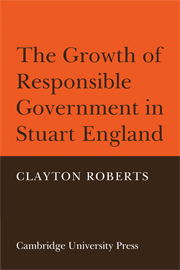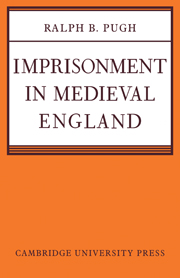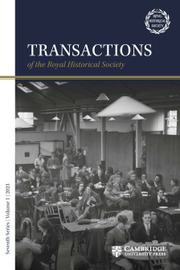The Growth of Responsible Government in Stuart England
Professor Clayton Roberts opens his book with the assertion that the responsibilities assumed by Sir Robert Walpole as the leading minister of George I differed markedly from those borne by Lord Burghley as the most trusted servant of Queen Elizabeth. Walpole assumed responsibility for the advice upon which the King acted, and answered to Parliament for the wisdom as well as the legality of that advice. Lord Burghley had claimed no such responsibility for the counsels upon which the Queen acted. If necessary Lord Burghley could plead the Queen's commands to justify his actions; Walpole knew he could not plead the Queen's commands to justify his conduct. He had to answer for his conduct to Parliament where he was liable to criticism, censure and impeachment. To gain office and to remain in office, Walpole needed the confidence of Parliament as well as of the King.
Product details
October 2008Paperback
9780521088763
480 pages
229 × 152 × 27 mm
0.7kg
Available
Table of Contents
- 1. The Revival of Impeachment (1603–1625)
- 2. The Rise and Fall of Irresponsible Government (1625–1640)
- 3. The Failure of Impeachment (1640–1642)
- 4. The Separation of Powers and the Principle of Accountability (1642–1660)
- 5. The Breakdown of the Balance of Government (1660–1674)
- 6. The Crisis of Confidence (1674–1688)
- 7. The Logic of Parliamentary Supremacy (1688–1697)
- 8. The Tory Conversion to Responsible Government (1697–1702)
- 9. Political Parties and Responsible Government (1702–1714)
- 10. The End of Impeachment (1715–1717).









